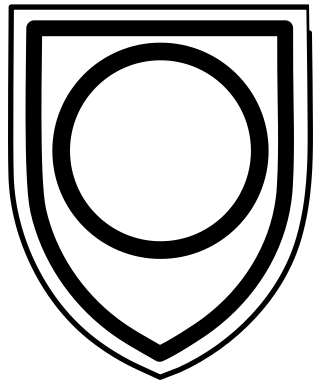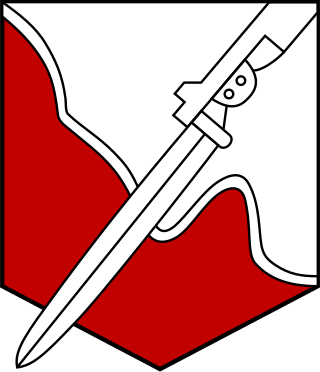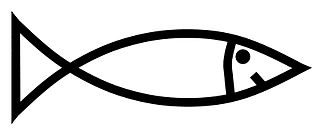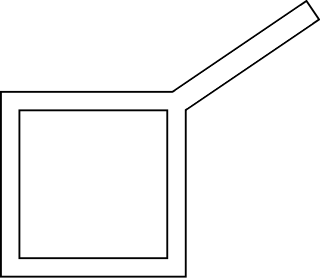Operational history
The division was formed on 26 August 1939 in Hanover. After mobilisation it was posted to the Westwall on the border with France. It took part in the invasion of France in 1940, advancing through Belgium. On 28 May 1940 soldiers of the division carried out the Oignies massacre; the 487th Infantry Regiment used civilians as human shields during fighting near the village of Oignies in Nord Pas-de-Calais, then rounded up and shot 80 French civilians in front of the town hall, as well as captured British, French, and Moroccan troops who were too severely wounded to march to the rear. [1] [2] The incident is one of several war crimes committed by the Wehrmacht during the 1940 campaign.
From July 1940 to May 1941, it was responsible for guarding a part of the English Channel coast. In June 1941 it was a part of Operation Barbarossa, as part of Army Group Centre. It remained with this Army Group until it was encircled and destroyed in July 1944. Shortly afterwards it was officially dissolved. [3]

The 13th Panzer Division was a unit of the German Army during World War II, established in 1940.

The 60th Infantry Division was formed in late 1939, from Gruppe Eberhardt, a collection of SA units that had been engaged in the capture of Danzig during the Invasion of Poland. This division was unusual in that its manpower was largely drawn from the SA and the police.

The 16th Infantry Division of the German Army was formed in 1934. On 26 August 1939 the division was mobilized for the invasion of Poland (1939). It participated in the Battle of France in August 1940. The division was then split, resulting in two independent units: The 16th Panzer Division and the 16th Motorized Infantry Division. Then later, from 1944 onward, combined with other non 16th elements, was known as the 116th Panzer Division.

The 3rd Infantry Division was an infantry division of the German Army that fought in World War II. The division was established under the cover name Wehrgauleitung Frankfurt in 1934 by expanding the 3rd Division of the Reichswehr. It was redesignated Kommandant von Frankfurt shortly afterward, and took on its bona fide name when the formation of the Wehrmacht was announced in October 1935. In March 1939 the division took part in the invasion and occupation of Czechoslovakia.
The 18th Infantry Division was formed on 1 October 1934 as Infantry Command III in Liegnitz and renamed the 18th Infantry Division on 15 October 1935. Mobilized in August 1939, it participated in the Invasion of Poland and in 1940 in the Battle of France. After the French campaign, the division was motorized and redesignated 18th Motorized Infantry Division on 1 November 1940 serving on the Eastern Front for the remainder of the war. In June 1943, the division was redesignated 18th Panzergrenadier Division.

The 161 Infantry Division was a major unit of the German Wehrmacht. It fought in the Battle of France, and then later on in the Eastern Front.

The German 5th Infantry Division was formed in October 1934 and mobilized on 25 August 1939. The division's troops were garrisoned in Konstanz, Ulm, and Freiburg. When formed, the division consisted of the 1st, 2nd, and 3rd battalions of the 14th, 56th, and 75th Infantry Regiments, the 1st, 2nd, and 3rd Battalions of the 5th Artillery Regiment, the 1st battalion of the 41st Artillery Regiment, and assorted 5th Division support units.

The 32nd Infantry Division of the German Army was mobilized on 1 August 1939 for the upcoming invasion of Poland. At that time, it consisted of the usual German Infantry Division elements: three infantry regiments of three battalions each, one three-battalion regiment of light artillery, one battalion of heavy artillery, a Panzerjäger (anti-tank) Battalion, a reconnaissance (Aufklärungs) Battalion, a Signals Battalion, a Pioneer (Engineer) Battalion, and divisional supply, medical, and administrative units.

The 83rd Infantry Division,, was a German reserve and security formation during World War II.

The 14th Panzer Division was an armoured division in the German Army during World War II. It was created in 1940 by the conversion of the 4th Infantry Division.
The 101st Jäger Division was a light infantry Division of the German Army in World War II. It was formed in July 1942 by the redesignation of the 101st (Light) Infantry Division, which was itself formed in December 1940. The Walloon Legion was briefly attached to this division from December 1941 to January 1942. The Division took part in the Battle of Kharkov, the Battle of the Caucasus, and the retreat into the Kuban, where it suffered heavy losses fighting both the Red Army and partisans. The division was then involved in the battles in the Kuban bridgehead before being evacuated. The 101st was subsequently transferred to the lower Dnieper River in late 1943. It was part of the 1st Panzer Army that was surrounded in March 1944; it formed the rear guard for the XLVI Panzer Corps during the breakout of the Kamenets-Podolsky pocket. The division then retreated across Ukraine. In October 1944, it was moved to Slovakia and took part in the Battle of the Dukla Pass.

The 45th Infantry Division was an infantry division of the army of Nazi Germany during World War II. Towards the end of the war, the division was reassembled into a second iteration, the 45th Volksgrenadier Division

The 93rd Infantry Division was a German infantry division that was formed in the fall of 1939. The division fought in the Second World War in both the Battle of France and on the Eastern Front. It was ultimately destroyed by the Red Army in March 1945 while defending East Prussia.
The 129th Infantry Division was an Infantry Division of the German Army during World War II.

The 34th Infantry Division,, was a German military unit that fought in the Battle of France and on the Eastern Front during World War II. The division was first formed following the expansion of the army under Adolf Hitler's leadership, but finally disbanded following their surrender to the Americans in Italy.

The 35th Infantry Division was a German Army infantry division in World War II.

The 50th Infantry Division was a German army division in World War II. It was formed on 26 August 1939 from the Grenzkommandantur Küstrin.

The 57th Infantry Division was a German division in World War II. It was formed on 26 August 1939 in Landshut.

The 122nd Infantry Division was a German infantry division in World War II. It was formed on 5 October 1940 as part of the 11th wave.

The 263rd Infantry Division was an infantry division of the German Heer during World War II.

















